By Alex Trukan
Playing with three central defenders and two wingbacks has become increasingly popular over the last years. Having three players positioned centrally at the back gives more room for central midfielders to go forwards and helps to create an overload in midfield. It also provides a better opportunity to use half spaces between the lines of opposition’s strikers and midfielders. Utilising wingbacks in turn, covers the role of the wide midfielders and enables a team to play with two strikers operating mainly in the central zones. All of that helps the team to attack centrally and create overloads without compromising the width of attacks.
Having three players (centre backs) behind the ball allows more flexibility with the usage of defensive midfielder. First option for him is to drop in front of the opposition forwards and try to get on the ball. This opens up possibilities for other central midfielders to move up higher and look to receive beyond opposition’s midfield unit. It also allows back three to have bigger distances between each other and utilise wide areas more. This option can be particularly useful if the team does not have good technically centre backs who can play out from the back.
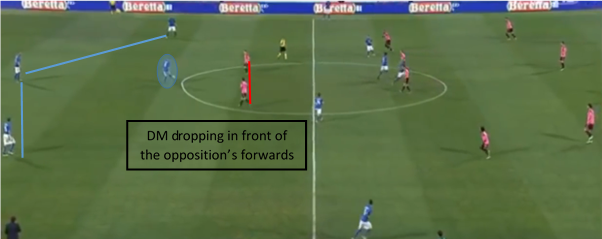
Second option for the defensive midfielder is to stay beyond the opposition’s strikers and try to receive in the gap between units. This encourages wide centre backs to get on the ball more often but at the same time is more risky, especially if the opposition plays with two or three strikers up front.
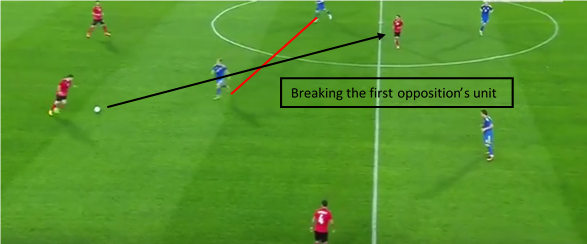
Playing between two centre backs can also drag single players ot of position. Strikers are likely to press individually and not as a unit what will create gaps in behind them and make playing through easier. The key for centre backs is to recognise the moment when to play forwards.
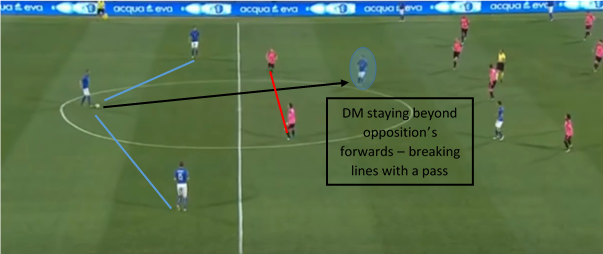
Another variation with the positioning of the back three is assymetrical option with one of the wide centre backs getting higher up the pitch and other two staying deeper. This is particularly useful when the opposition plays with deeper lying wide midfielders (i.e. flat 4-4-2) as it would allow wide centre backs to use spaces between opposition strikers and wide midfielders.
[wpsharely id="2988"][/wpsharely]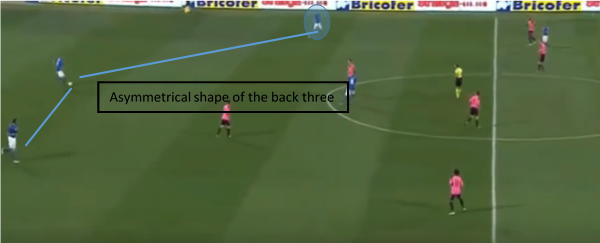
This type of asymmetrical positioning of the back three will also affect supporting positions of wingbacks. Wing back on the opposite side might choose to drop back and offer support in case the ball is switched, while a wing back on the ball side has a license to push up higher (as wide centre back will occupy deeper spaces). This shape might look really similar to a classical back four.
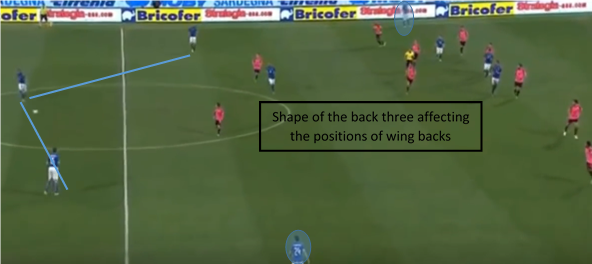
Having wide centre backs in those key half spaces between central and wide areas allows a quick switch of play. It also provides defensive cover of both central and wide areas in case the ball is lost. This is why, it can be classed as even more defensive shape than for example 4-4-2 which has usually only two players (two centre backs) in the middle areas when the ball is lost.
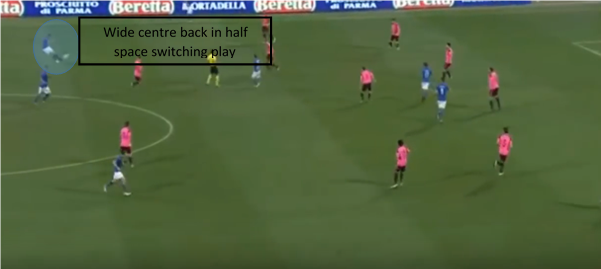
However, the main weakness of 3-5-2 upon transition to defence are wide areas which should be occupied by wingbacks (often positioned to high up the pitch). The next players to cover these areas are usually wide centre backs but they should not be tempted to go too wide as it will expose the more important, middle areas of the pitch. The back three should be disciplined enough to apply pressure as a unit, from inside out and make sure they won’t get caught too wide.
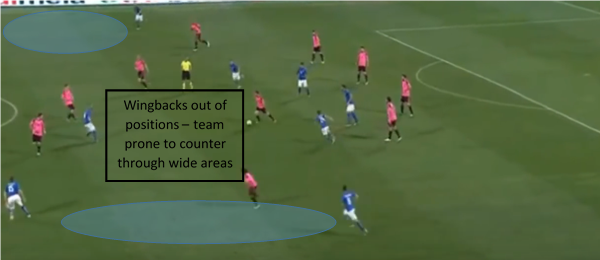
When losing the ball it would be important to force the opposition centrally rather than wide. Having 8 players (2 strikers, 3 central midfielders and 3 central defenders) in the middle zone of the pitch will make it very difficult for the opposition to play through.
By Alex Trukan, Development Coach, Nottingham Forest
@AlexTrukan


